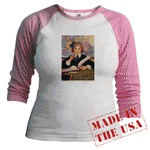| Introduction | Annotated Tales | eBooks | Bookstore | Illustration Gallery | Discussion Board | Blog |
 |
|
Best of the Web Rapunzel, Rapunzel, Let Down Your Hair
|
Although Rapunzel comes from the Grimms, the tale can be traced back to similar tales from Italy and France. As is true with many tales, the first literary traces of the tale come from Giambattista Basile's Pentamerone (1637). Basile wrote about Petrosinella in his tale, with the heroine's name being derived from "petrosine" for parsley. There are many similarities in the tale to Rapunzel with a few differences. In Basile's tale the heroic pair elopes instead of suffering before discovering each other years after the witch curses them. Sixty years later in 1697, Charlotte Rose de Caumont de la Force, a French aristocrat, published her own version of the tale. Her collection of fairy tales included "Persinette" (once again "persille" is parsley) which had obvious direct ties to Basile's tale. This tale is almost exactly like Rapunzel excepting the more detailed ending in which the heroes suffer even more after their reunion in the wilderness. Finally, the angry fairy spares them after finding mercy in herself. Then the couple lives happily ever after. "Persinette" was translated into German several times. One translation by J. C. F. Schulz is thought to be the indirect source of the Grimms' tale. Schulz changed the "persille" to "rapunzel" providing one strong piece of evidence in support of his influence. The Grimms were apparently unaware of the literary tales of La Force and Schulz, and assumed the tale was oral in origin. The tale has too many similarities to the Schulz tale, however, which implies that one of their human sources had heard a rendition of Schulz from somewhere else. This phenomena is not uncommon in most fairy tales. The intermixing of cultures and versions took place until the world received the printed Grimm and Perrault versions of many tales. Once again, one of my favorite modern renditions of Rapunzel comes from Paul O. Zelinsky. His version won the Caldecott Medal for its spectacular use of Renaissance art themes and styles. I highly recommend it for capturing the flavor of the tale's many versions all at once. |
|
| ©Heidi
Anne Heiner, SurLaLune Fairy Tales E-mail: heidi@surlalunefairytales.com Page created 1/1999; Last updated 7/2/07 www.surlalunefairytales.com |






